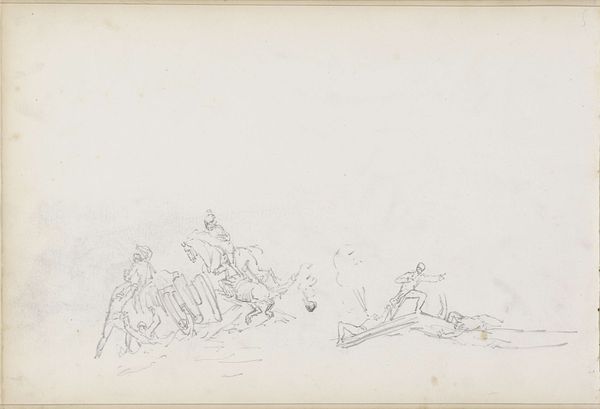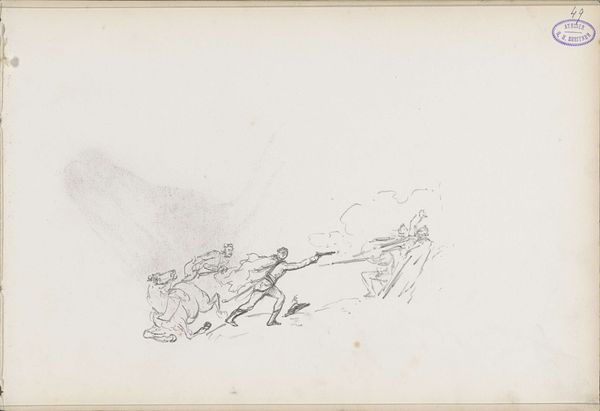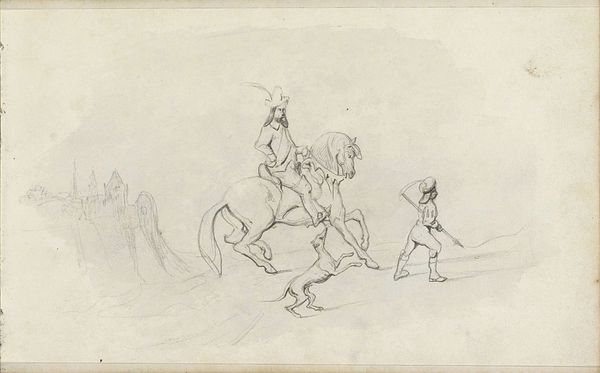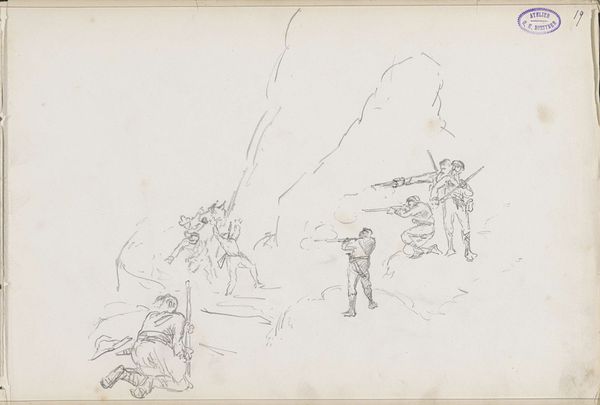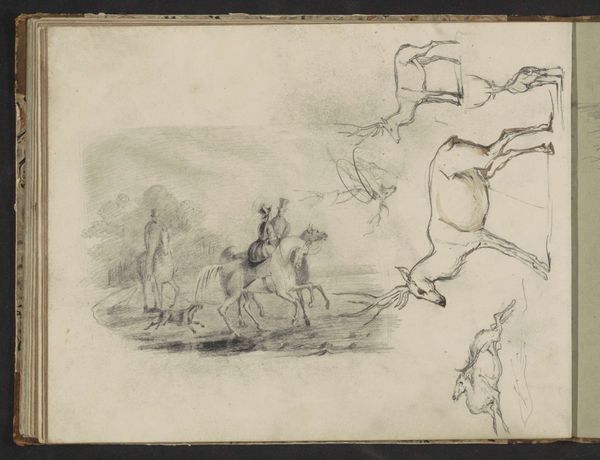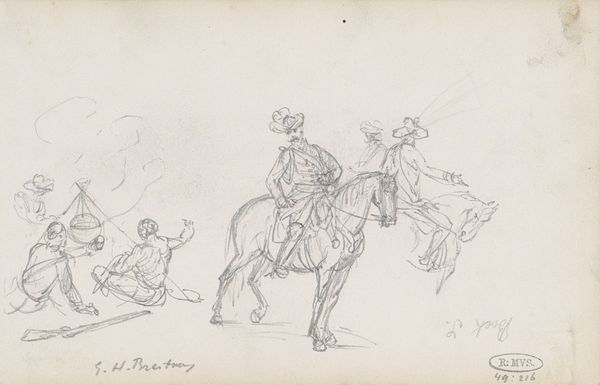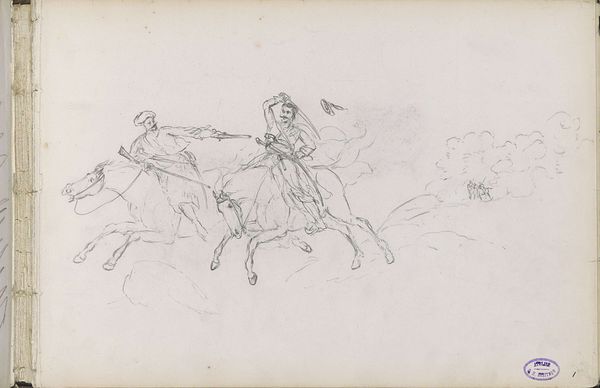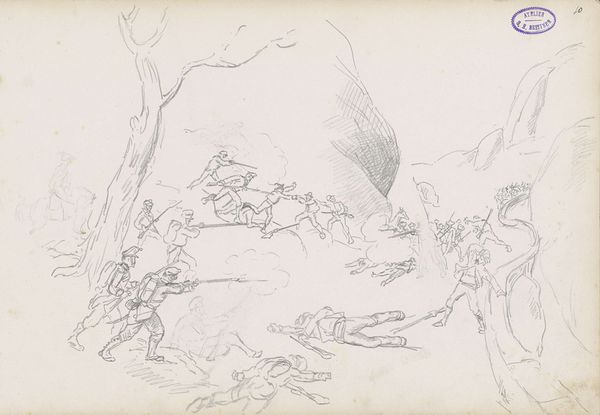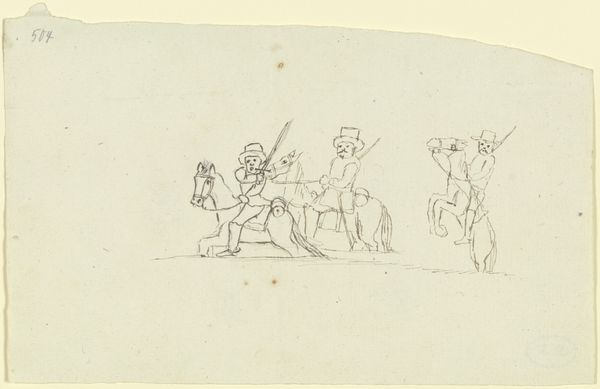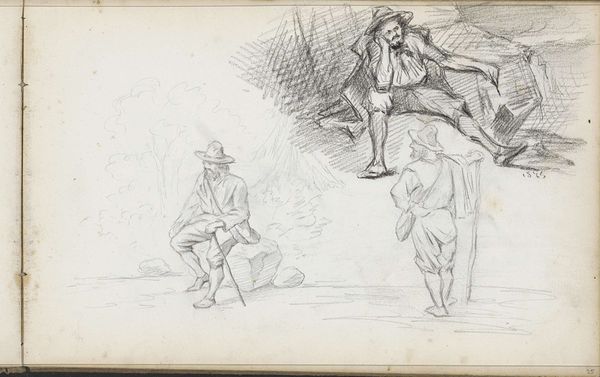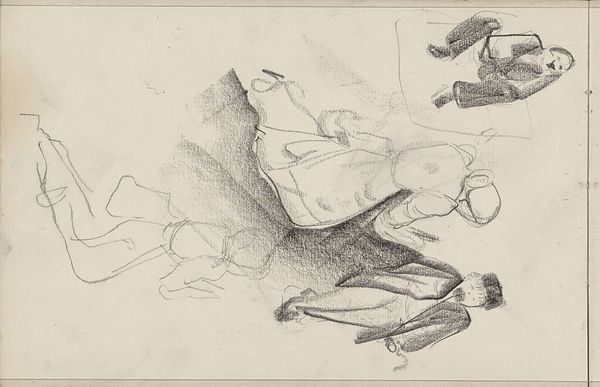
Een oorspronkelijke Amerikaan wijst een witte man op een groep figuren c. 1871 - 1876
0:00
0:00
drawing, paper, pencil
#
drawing
#
narrative-art
#
figuration
#
paper
#
pencil
Dimensions: height 134 mm, width 209 mm
Copyright: Rijks Museum: Open Domain
Curator: This pencil drawing, currently held in the Rijksmuseum, is titled "An Indigenous American Points Out a Group of Figures to a White Man". George Hendrik Breitner likely created it sometime between 1871 and 1876. Editor: There's a distinct tension conveyed in such a sparse image, isn't there? A power dynamic seems embedded even in the casual, sketched nature. Curator: Absolutely. Consider the landscape tradition within which this piece resides. The positioning of figures within a landscape speaks volumes. Note the gaze, the weaponry, the differing attire... these are loaded signifiers. It prompts the question, "What narrative is Breitner invoking?" Editor: Exactly. Who is telling this story, and from what vantage point? The drawing's realism contrasts sharply with the romanticized narratives of the "noble savage" prevalent during this era, yet it also doesn't shy away from showing indigenous people in relation to colonizers. I read a level of implied complicity here; a discomfort that asks me as the viewer to recognize the dynamics being represented. Curator: The fire and the figures at its periphery carry strong symbolic weight, speaking to the heart of the representation. Fire can symbolize renewal, destruction, purification. In this drawing, perhaps Breitner aimed to encapsulate something of the ambiguous role of transformation – destruction as innovation and tradition being replaced? The white man with his rifle embodies a sense of static authority that will inevitably impose his worldview and his actions on others. Editor: I agree. This piece encourages a reading that incorporates power and historical consequences into art, showing an unequal exchange occurring where neither party appears in control of what happens next. The indigenous person points to their people. Their people are presented as being outside this exchange of power, in the far left distance. Curator: This drawing serves as an invitation to interrogate colonial history and legacies of violence inherent within artistic representation, but simultaneously provides subtle acknowledgement of continuity through shared symbolism across civilizations. It reminds me that cultural memory is always actively reshaped, never a static entity. Editor: Ultimately, looking at a piece such as this forces me to confront the complexities and discomforts inherent within historical narratives that inform our contemporary understanding.
Comments
No comments
Be the first to comment and join the conversation on the ultimate creative platform.
